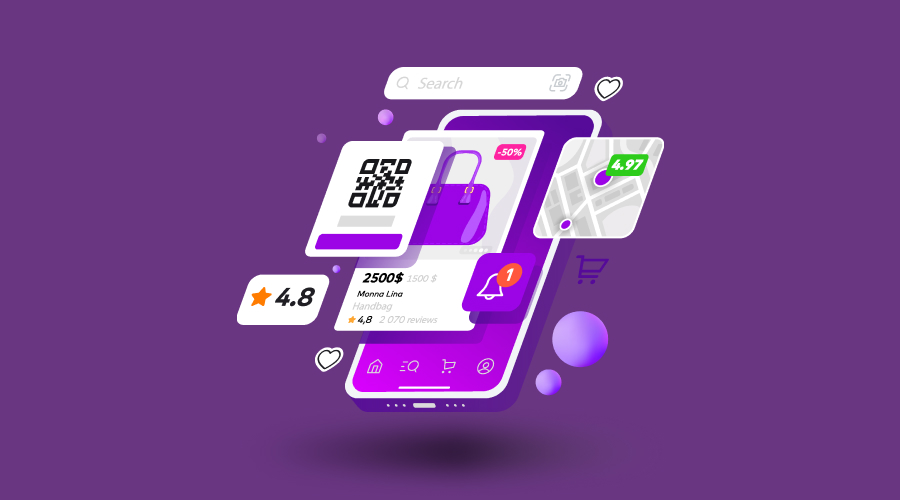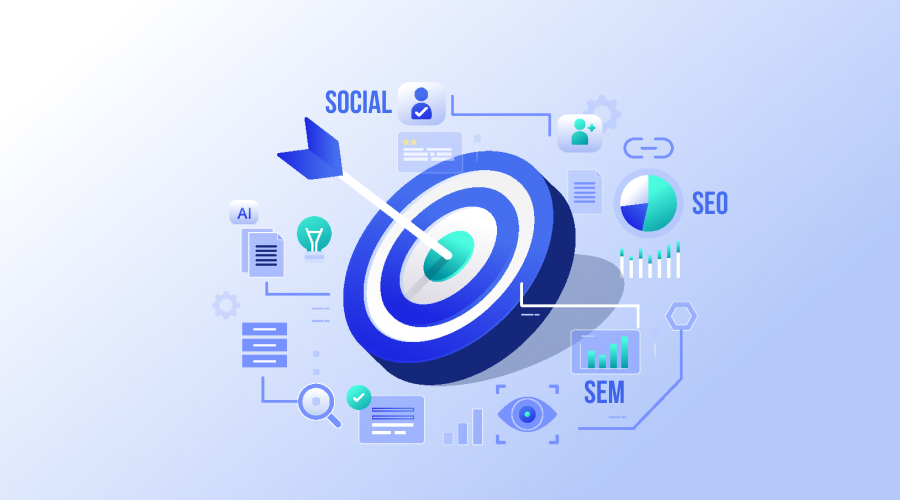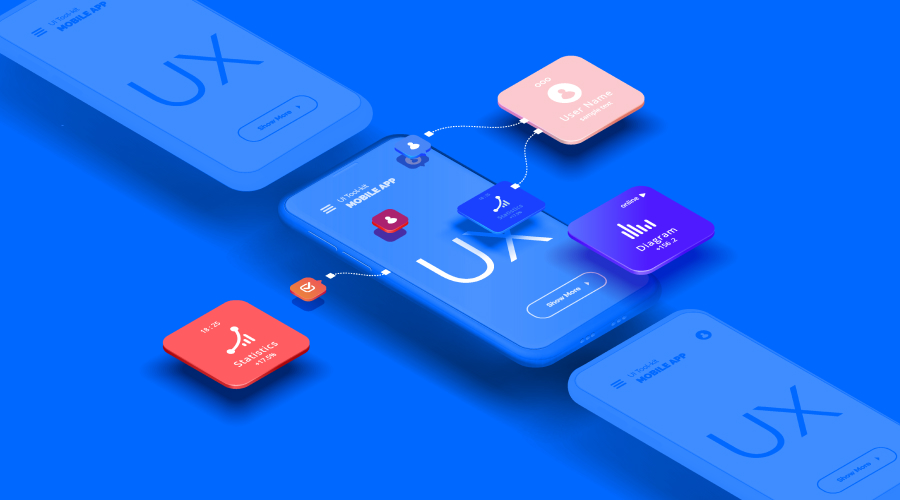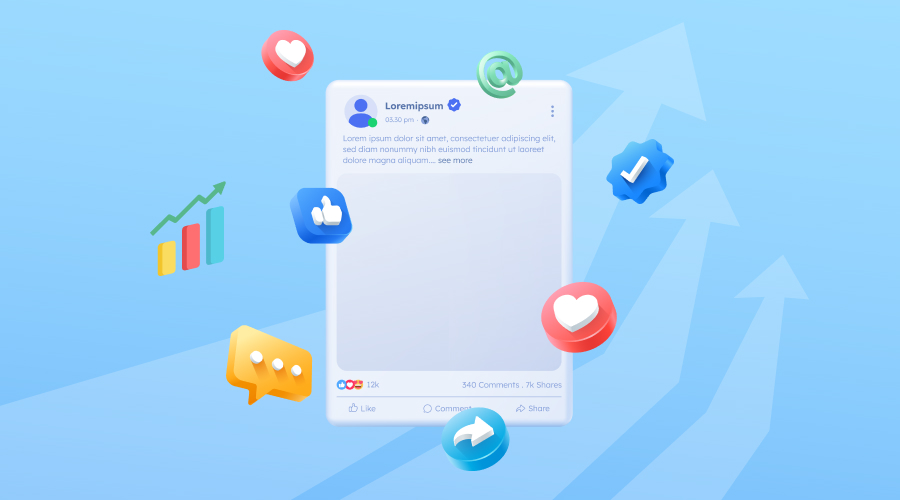Mobile applications are booming. However, building an application for your business is not just about coding. Knowing the right phases to build the app makes all the difference. From idea generation and validation against markets to designing, developing, and post-launch growth – plan features, test performance, optimize for app stores, and avoid common pitfalls like budget overruns and store rejections. With Knovial’s expert guidance, your app is on the track, user-friendly, and primed for success. Whether you are starting with groundwork or scaling up, this guide has everything in store to ensure your mobile app journey is strategic, smooth, and yields results.
Mobile apps are booming. According to Statista, in 2024, revenues passed $522.7 billion, and growth is nearing 12 % year over year. Grand View Research states that the global market is on track to reach $626 billion by 2030, driven by AI, 5G, and new monetisation models.
Business app development is a journey. It starts with understanding users and continues through crafting design, testing features, preparing for launch, and growing post-launch.
Ideation & Market Research
Every great app starts with a smart idea and a clear market insight. Let’s move into defining the idea and testing it.
1. Defining Your App Concept
Clarify what your app does and for whom. Pinpoint issues your app will solve. Maybe it streamlines workflows, boosts customer engagement, or simplifies ordering. Break your audience into personas. Know their needs, habits, and goals.
Study the competitive landscape. See what apps already address similar problems. Learn what they do well and what they don’t.
2. Market Validation
Before building, confirm the market needs of your app. Take the help of surveys and focus groups. Ask potential users directly. This will help you refine your idea.
Sketch a simple minimum viable product. What core features would prove the idea? Use early interest and cost estimates to assess market size and potential return. Even basic numbers can guide your next move.
3. Monetization Strategy Planning
Know how your app will generate revenue early on. Should your app be free with limited features (freemium) or cost money upfront? Consider selling features inside the app or offering recurring access for extra value. Advertising can support free apps. But balance user experience and revenue carefully.
Planning & Design
Forming an idea, followed by market research, is the first step. That’s what forms the core of your planning. With that done, you move into planning and shaping the user’s experience. Here’s how to plan your app’s flow and look.
1. Technical Requirements & Features
List what makes your app work and see how it connects. Detail core features. What must the app do from day one? Focus on the user journey. Map step-by-step how users will navigate your app. Specify APIs or services your app must connect with, like payments, CRM, analytics, etc.
Be sure of the platform choices for your app. Decide if you’ll build for iOS, Android, or both. Cross-platform tools can help you reach more users cost-effectively.
2. UI/UX Design Process
Design is about ease and clarity. Start with simple visual outlines. Turn them into clickable prototypes for feedback. Use clean layouts, clear buttons, and readable fonts. Keep it intuitive.
Ensure your app works for all users. Use high contrast, readable text, and support assistive tech. Match the app’s look to your brand. Stay consistent with colors, fonts, and tone. This consistency helps in building trust.
3. Technical Architecture
A strong back-end and data plan prevent headaches later. Keep the backend infrastructure clear. Plan servers, cloud services, and APIs that support your app reliably. Design data structure thoughtfully. Protect user data with encryption and secure access. Build to handle growth. Test load and plan infrastructure that scales when users increase.
Development & Testing
The third state after planning and design is development and testing. Code and quality checks are very crucial to building the app. Let’s see how your app gets built and tested.
1. Development Methodology
Organize your build with structure and clarity. Take the agile approach. Break work into sprints. Deliver iteratively and adjust with feedback. Set small, clear goals for each sprint. Take it feature by feature.
Keep communication open. Use tools like Slack, Trello, or Jira to stay coordinated. This also helps in better team collaboration.
2. Quality Assurance
Testing ensures your app works reliably. Conduct both unit and integration tests. Test individual parts and how they work together. You can also try out user acceptance testing. Let some real users test your app before launch.
Don’t forget performance and security testing. Check speed, load, and data safety under real conditions. Ensure the app works across phones, tablets, screen sizes, and OS versions.
3. Beta Testing & Feedback
Beta testing bridges quality assurance to real-world use. Have your team use early versions. This internal testing will help you fix the obvious bugs. After that, you can test through external beta programs.
Invite early adopters or target groups. They will try the app and share feedback. Listen. Refine. Adjust features and design quickly. Launch only when key issues are resolved and performance meets the standard.
Pre-Launch Preparation
A smooth launch starts well before go-live day. Several steps come between mobile app development and testing and launching the app. Let’s see what these steps are so that you can tackle your app launch with absolute preparation.
1. App Store Optimization (ASO)
Visibility on app stores matters. And it is your app’s title and description that bring this visibility. Use clear, concise titles. Describe benefits and features simply. Include relevant terms users search for, including “business app,” “employee tracking,” or “e-commerce.”
Show real app actions. Let users see what to expect. Use screenshots and preview videos to show your users what they are actually getting with the app. Make sure to follow all rules, like icons, screenshot size, and privacy statements. You don’t risk rejection after working so hard.
2. Marketing & Promotion
Marketing and promotion are one of the most important steps. Build awareness before launch. Conduct pre-launch campaigns. Share teasers, early access, and launch countdowns.
Take full advantage of social media and content creation. Create posts, demo videos, and blogs to gather interest. Send press releases to tech blogs or business media. Let them tell your story. Build anticipation. Use sign-up pages to collect emails. Let early users feel included.
3. Legal & Compliance
Don’t overlook the small print. Write clear policies matched to your features and region. Meet GDPR, CCPA, or other rules if you handle user data—especially for global apps. Provide all required assets, permissions, and accounts for App Store and Google Play. Protect your brand, name, and icons. Avoid infringement risks.
Launch & Post-Launch
Launch is exciting—but post-launch matters more. Never forget the last-minute checks. Get your app out to users. Submit, watch approval, and resolve issues quickly if flagged. Be prepared to handle the rush of the launch day. Coordinate release, monitor servers, and store listings. Use launch promotions. Discounts, referrals, and media push will bring you more users.
Always monitor the performance so that you can improve and grow. Track installs, active users, session length, churn, conversion, and revenue. Set up crash reporting. Fix issues before they ruin user experience. Use feedback to guide updates. If your users feel seen and heard, they will know that you value their feedback and needs.
Finally, never stop the ongoing optimization. App growth doesn’t stop at launch. Add features, update designs, and patch bugs regularly. Optimize servers, reduce load times, scale backend as users grow. Plan for retention, referrals, new features, and new markets.
Stay on Top of the Common Challenges With Knovial
Every app faces hurdles. Forewarned is forearmed. One of the common ones is budget overruns and delays. Scope creep kills budgets. There are also technical and integration issues, adoption and retention problems, and store rejections.
However, at Knovial, our team knows how to stay ahead of such problems. You get a partner – one who anticipates issues, stays on schedule, and keeps your app roadmap clear and achievable.
Ready to turn your app idea into reality? Contact Knovial today at 888-833-9088 to build an app for your business!







